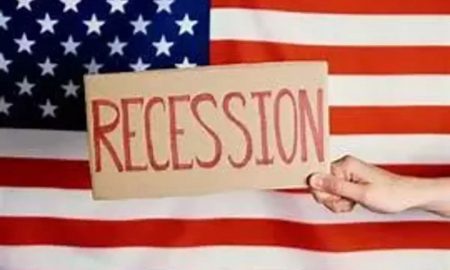
Everything You Need to Know About Blended Interest Rates

Hou ever blended a smoothie and thought, “How on Earth do my strawberries, spinach, and protein powder come together to taste so good?” Well, the world of finance has its own kind of blend that might seem a tad complex at first but makes perfect sense once you get to know it: the blended interest rate.
Let’s deep-dive into what you really need to know about blended interest rates:

Kampus / Pexels / Blended interest rates simply mean you weigh your loans and interest rates and merge them up accordingly.
What Is a Blended Interest Rate?
Blended interest rates are essentially the weighted average of multiple interest rates. Imagine you have two loans, each with a different interest rate. Instead of keeping track of both, you could find an average rate that represents the cost of both loans. That is your blended rate.
But why bother with it? In many cases, understanding your blended rate can give you a clearer picture of your actual debt burden and what it is costing you.
Why You Need It
So, you might wonder, “Why can’t we just average the rates?” Here is a scenario. Let’s say you have a $10,000 loan at 5% and a $20,000 loan at 10%. If you average the rates, you would get 7.5%. But hold up! That is not an accurate representation. Why? Because you owe twice as much on the 10% loan than on the 5% one.

Andrea / Pexels / In essence, a blended interest rate is the weighted average of multiple interest rates.
The real blended rate takes into account the balance of each loan. Doing the math, you would get a blended rate of around 8.33%. That is a whole 0.83% higher than the simple average, and that can mean quite a bit of money in the world of loans!
Blending In Real Life: When Will You Encounter This?
If you are thinking of consolidating multiple loans into one, knowing your blended rate can help. It will give you a target to beat when shopping for a consolidation loan.
If the new loan’s rate is higher than your blended rate, you might want to think twice. Now, let’s flip the coin. If you have invested in multiple ventures with varying returns, the blended rate can show your average return. That way, you can assess if your investments are truly paying off.

Pavel / Pexels / If you are looking for a consolidation loan, blending your interest rates can be of great help.
To Blend or Not to Blend: Is It Always Useful?
Like that occasional weird smoothie mix (cabbage and blueberries, anyone?), blended rates might not always be the flavor you need. If your loans are roughly the same size with vastly different rates, the blended rate could make the overall cost seem rosier than it really is.
However, it is vital to understand the nuances and not just the headline number.
Making the Most of Your Blend
Here is how you can make the most of your blend:
- Always Compare: Before consolidating debts, compare the blended rate with potential consolidated loan rates. It is like checking reviews before buying a new blender. Always worth it!
- Know Your Weights: Remember, it is not just about rates. The size of the loan plays a big part in the blended rate. Bigger loans have a heavier “weight” in the blend.
- Regular Reviews: Your financial situation and interest rates can change. Re-calculating your blended rate now and then keeps you informed and ready to make savvy decisions.
More in Loans & Mortgages
-
`
Curious About Travis Kelce’s Net Worth? Here’s the Scoop!
Travis Kelce’s name echoes through NFL stadiums, synonymous with athletic prowess and electrifying plays. But beyond his touchdown celebrations and record-breaking...
June 10, 2024 -
`
Everything You Need to Know About an Assumable Mortgage
What is an Assumable Mortgage? Whether you are a buyer or a seller, understanding the concept of assumable mortgages can open...
June 6, 2024 -
`
Layoff vs. Fired – Understanding the Crucial Differences
When it comes to job loss, understanding the distinction between being layoff vs. fired is crucial. While both situations result in...
May 30, 2024 -
`
When Are Business Taxes Due 2024? Essential Dates and Deadlines
Tax deadlines can be daunting, but fear not! Let’s break down everything you need to know to stay on top of...
May 22, 2024 -
`
How Much Does Jeff Bezos Make Per Hour? It’s More Than You Think!
Jeff Bezos, a name synonymous with innovation and wealth, stands as one of the world’s richest individuals. While Bernard Arnault and...
May 16, 2024 -
`
What is Portfolio Investment Entity (PIE) and How Can it Benefit You?
In the intricate world of finance, individuals seek avenues to optimize their investments while minimizing risks. One such avenue gaining traction...
May 9, 2024 -
`
What is a Bank Statement? Understanding its Definitions, Benefits, and Prerequisites
Ever wondered where your money goes? A bank statement is like a financial report card, giving you a clear picture of...
April 30, 2024 -
`
Branded Content: A Genuine Way to Connect With Your Audience
Have you ever binge-watched a series on Netflix, only to later realize that the beverage everyone’s sipping on is that brand...
April 23, 2024 -
`
What Car Does Jeff Bezos Drive? Find Out Inside His Exclusive $20 Million Collection
Have you ever wondered what car does Jeff Bezos drive? This man’s tastes in vehicles are as expansive as his business...
April 17, 2024















You must be logged in to post a comment Login